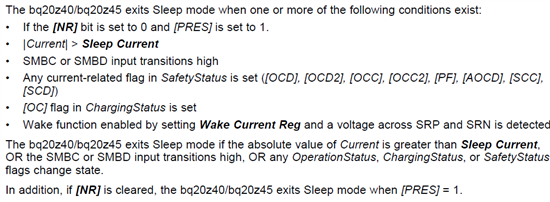Hi,
I am using the BQ20Z45-R1 and would like to reduce the average sleep mode current. When the BQ20Z45-R1 enters sleep mode I measure the expected 50uA supply current.
The IC then appears to wake-up at approximately 1 second intervals drawing 400 to 500 uA. Every 5 seconds or so, the current increases to > 1000uA. The effect of these wake-up events is an average sleep current of 120uA.
The wake-up intervals appear to be 4x to 5x faster than the intervals given in the BQ20Z45-R1 data sheet and reference manual. Is there a setting that I can use to adjust the wake-up intervals?
Thank You!
Doug Young


